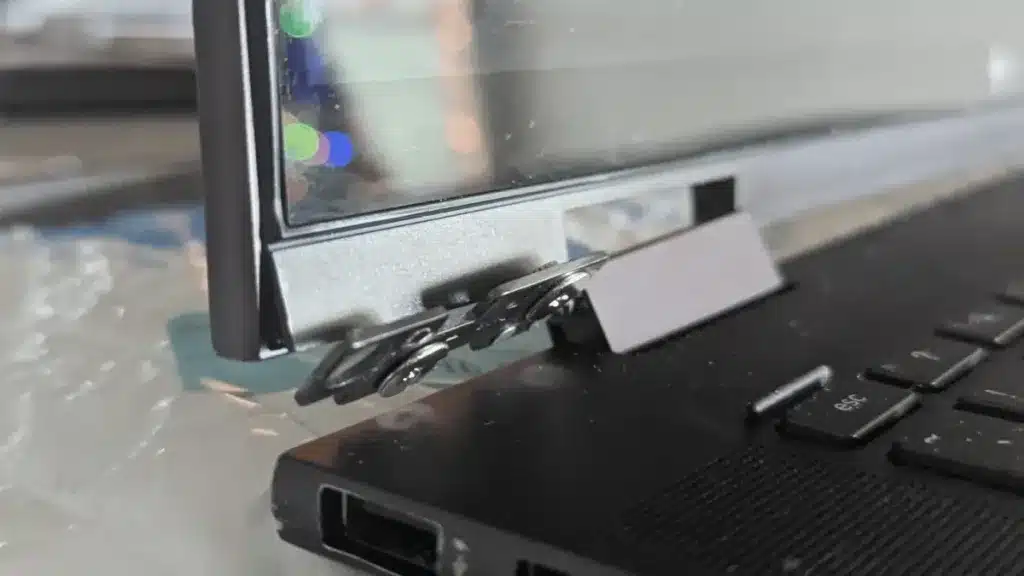It is baffling how manufacturers manage to repeatedly design laptops with fragile hinge mounts and weak adhesives. Instead of investing a small additional cost in stronger construction, many brands resort to gluing thin metal pieces or plastic mounts, resulting in hinge assemblies that do not hold up under normal use. This pervasive design flaw forces consumers to spend extra money on repairs or replacements far too often.
Manufacturers often use cheap plastics or glued thin metal slabs to save production costs. While the hinges themselves are made of metal, they are either glued to the assembly or are just attached to the plastic shells. Such cost-cutting results in the hinge mounts detaching or screws ripping out of plastic, causing the lid to snap off or become unstable. This approach lacks the mechanical strength needed to withstand everyday movements like opening, closing, and carrying, especially over years of use.
Besides glued mounts failing, screws tend to pull out of weak plastic frames inside the laptop lid. These plastic mounts are often molded directly into the fragile lid material rather than being metal inserts, making them prone to stripped screws and further weakening the hinge support.
Being in Australia, a small country where a huge part of supply chain depends on overseas shipments, repairs like this can take weeks to order full lid assemblies from overseas, resulting in long delays and dissatisfied customers who want their laptops fixed quickly. There is a way to fix these quickly by drilling holes through the display lid and using longer screws, but it doesn’t look pretty!
The worse part of this repair is when the adhesive between the hinge and keyboard palm rest fails. This completely prevents us from being able to drill through, because you won’t be able to shut the screen properly, which leaves us no choice but to replace the whole palm rest assembly. This gets expensive (from $300) and can take weeks.
Expensive laptops like Apple and Lenovo ThinkPad do not suffer from these frequent hinge failures because they use solid aluminum unibody designs for their laptop lids. The hinge mounts are directly integrated into a single metal part, eliminating the need for adhesives or glued parts that can fail. This approach costs slightly more but significantly increases structural integrity and longevity. How much more? We don’t have any insider info, but I reckon it’s just a few dollars.
When manufacturers prioritize cost over quality, consumers pay the price in broken hinges, frequent repairs, and eventual laptop replacements. Studies and repair shops report that corners cut in hinge design are a major reason users switch to Apple or other premium brands despite potentially higher prices.
Mechanics and engineers often face pressure from corporate finance teams to reduce material use and keep production costs low. Despite engineers warning that using less material compromises laptop structural integrity, the push for cheaper production usually wins out, leading to widespread hinge issues.
And the worst part? Manufacturers are ok with that! Imagine the damage to your reputation as a brand when you knowingly sell cheap laptops that are designed to fail from normal use! Consumers can demand better build quality by choosing brands known for durability or requiring manufacturers to improve hinge designs.
Want to avoid dealing with this? Don’t buy cheap plastic laptops. Look at beyond just the specs and price. Does the laptop feel well designed and built? Or does it creak under pressure and looks like it’s made from recycled plastic? We encourage you to avoid cheap, plastic-hinged laptops and instead invest in models that use premium materials.
Of course, not everyone has budget and need for a premium laptop that could easily cost $2000 or more. If that’s the case, refurbished laptops are your best bet. Come talk to us to help you finding the next laptop.







